Seoul Gongyesa [Tax Refund Shop] (서울공예사)
391.7748555692678m 0 2024-04-16
1F, 27-1, Insadong-gil, Jongno-gu, Seoul
-
Restaurant DAM (레스토랑담)
394.2765713593512m 144 2021-03-30
30-7, Insadong-gil, Jongno-gu, Seoul
+82-2-730-3624
It is a gallery-like restaurant where you can enjoy paintings by famous artists. This restaurant's signature menu is pork shoulder steak. This Western dishes restaurant is located in Jongno-gu, Seoul.
Beautiful Tea Museum (아름다운 차박물관)
396.08938765107735m 40652 2022-07-26
19-11, Insadong-gil, Jongno-gu, Seoul
+82-2-735-6678
Located in Insa-dong, The Beautiful Tea Museum aims to promote Korean tea culture. It preserves and exhibits tea related utensils and items, featuring those from the ancient Gaya and Joseon period as well as items from abroad such as China and Tibet. The museum also displays original tea pots and other ceramics made by young artists and ceramists. Inside the museum is a tea house named "Tea Story," serving a wide variety of teas. Visitors can also purchase tea leaves from all over the world at the Tea Shop.
Jongmyodaeje (Royal Ancestral Memorial Rite of Joseon) (종묘대제)
396.00201965757293m 24414 2022-10-05
157, Jong-ro, Jongno-gu, Seoul
• 1330 Travel Hotline: +82-2-1330 (Korean, English, Japanese, Chinese) • For more info: +82-2-3210-4806, +82-2-6011-1067
Jongmyodaeje, Korea’s Royal Ancestral Memorial Rite, is a traditional ritual that has been recognized with many important designations. It is a UNESCO Masterpiece of the Oral and Intangible Heritage of Humanity, Important Intangible Cultural Property No. 56 (Jongmyo Jerye), and Korea’s Important Intangible Cultural Property No. 1 (Jongmyo Jeryeak). The ritual is held yearly on the first Sunday of May. It begins with eogahaengnyeol, the fabulous royal parade dating from the Joseon dynasy, which is truly a sight to behold as it moves through the modern city.
Jongmyodaeje originated as a royal ancestral ritual to honor the past kings and queens of the Joseon dynasty. During the Joseon era, the ritual was held five times a year (spring, summer, autumn, winter, and December) until it was abolished by Japanese colonial rule. In 1969, Jongmyodaeje was reinstated and has been held in May every year since.
Jongmyo Shrine, the destination of the procession, was the setting of ceremonial rituals during the Joseon dynasty. Originally, Jongmyo only referred to Jeongjeon (Main Hall) where the memorial tablets of Joseon’s reigning kings and queens are enshrined. Today, however, Jongmyo also encompasses Yeongnyeongjeon (Hall of Eternal Peace) where the tablets of posthumous kings and queens are enshrined and Gongsindang (Hall of Meritorious Subjects) where the tablets of esteemed ministers of the state are kept.
Isae - Insa Branch (No. 2) [Tax Refund Shop] (이새 인사2호)
397.0856864640218m 0 2024-04-18
30-1, Insadong-gil, Jongno-gu, Seoul
-
Ipamnamu - Insa Branch [Tax Refund Shop] (이팝나무 인사)
397.98891182912695m 0 2024-04-18
4, Insadong 5-gil, Jongno-gu, Seoul
-
Choedaegamne (최대감네)
398.9653007146325m 4298 2024-03-18
12-3 Insadong 8-gil, Jongno-gu, Seoul
+82-2-733-9355
Choedaegamne is a traditional Korean restaurant located in a hanok in Insa-dong, with a garden and a pond, and has been in operation for over 100 years. One of their popular dishes is the sangchu shabu jeongsik (shabu with rice in a cabbage set menu), where vegetables and meat are cooked in a broth and then enjoyed with noodles, served with a small rice ball on lettuce. They also offer a so galbijjim jeongsik (steamed beef ribs set menu) and bulgogi jeongsik (bulgogi set menu), served with lotus leaf rice and soybean paste jjigae. After the meal, guests can enjoy tea in the garden.
Isae (이새)
399.1046102305304m 16890 2020-04-24
43-1, Insadong-gil, Jongno-gu, Seoul
+82-2-6713-5592
Targetting middle-aged customers and senior citizens, Isae only uses chemical-free fabrics. Natural fabrics and dyeing characterize clothing in Isae along with functional comfort. Both modern and hanbok (traditional Korean clothing) styles are available.
Seungdong Church (승동교회)
401.99935946487966m 14170 2020-04-02
7-1, Insadong-gil, Jongno-gu, Seoul
+82-2-732-2340
Seungdong Presbyterian Church was designated Tangible Cultural Asset No. 130 by the Seoul Metropolitan Government on April 6, 2001. Originally known as “Gondanggol Church,” the church was established by Samuel Foreman Moore (1860-1906) in 1893. In those days, the church was known as a “baekjeong church” since it primarily drew Korea’s social underdogs such baekjeong (the butchers), the untouchable class of Joseon society.
Following a number of relocations and name changes (called “Gondanggol,” “Jungang,” and finally “Seungdong”) the church was moved to its current location in Insadong. After Moore died in 1906, Charles Allen Clark became the pastor of the church and Mongyang Yuh Woon-hyung, a key figure in the political history of Joseon, became active in the church. The church was attended by many other activists as well. In fact, the large student demonstration that took place during the March 1st Independence Movement in 1919 was organized by a group of young church members. The church once again made its mark on history with the establishment of the Joseon Theological Seminary in 1939.
Seungdong Church (B1-2F) covers a total of 660 square meters. No record has been found on its architect or builder, but the building is said to have been one of the more magnificent buildings in the area before its beauty was obscured by newer structures.
Tong-In Store (통인가게)
402.3398886499142m 17934 2020-05-07
32, Insadong-gil, Jongno-gu, Seoul
+82-2-733-4867
Tong-In Store is the oldest traditional crafts shopping center in Korea. It is home to over 100 shops that sell ancient and contemporary traditional crafts, as well as galleries that display craft collections by emerging artists.
![Seoul Gongyesa [Tax Refund Shop] (서울공예사)](http://tong.visitkorea.or.kr/cms/resource/10/2878210_image2_1.jpg)
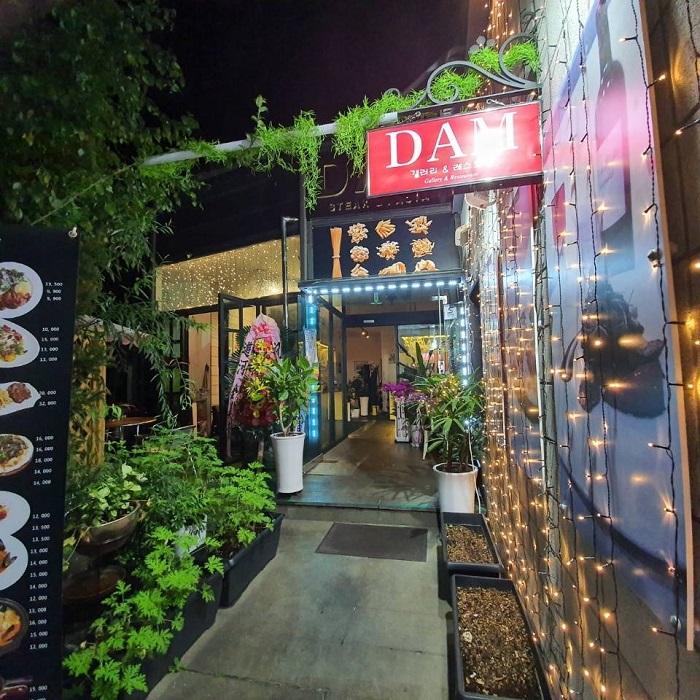
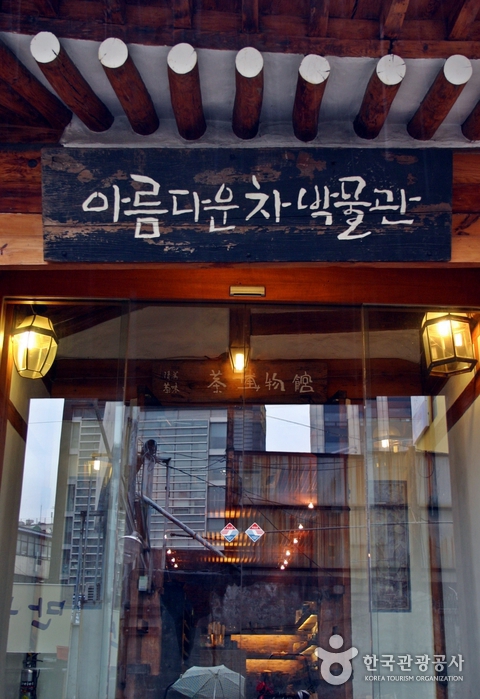
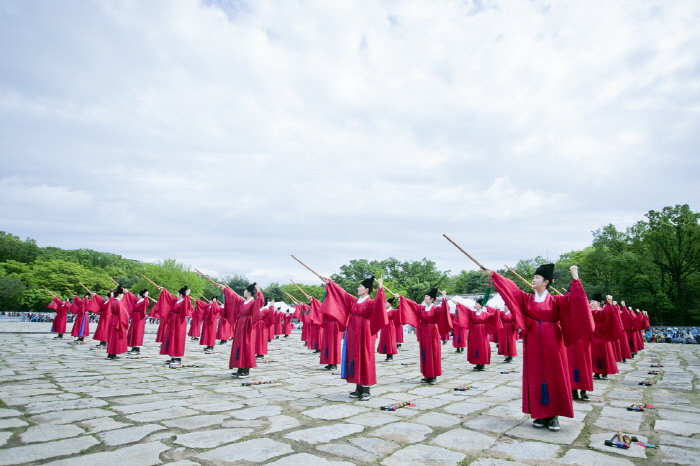

![Ipamnamu - Insa Branch [Tax Refund Shop] (이팝나무 인사)](http://tong.visitkorea.or.kr/cms/resource/08/2878208_image2_1.jpg)
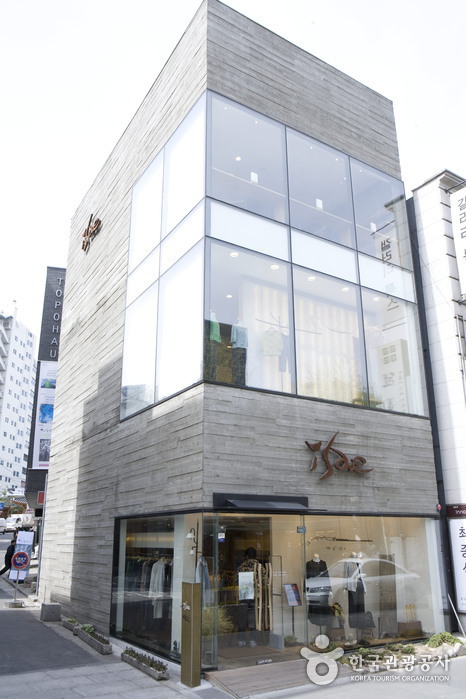
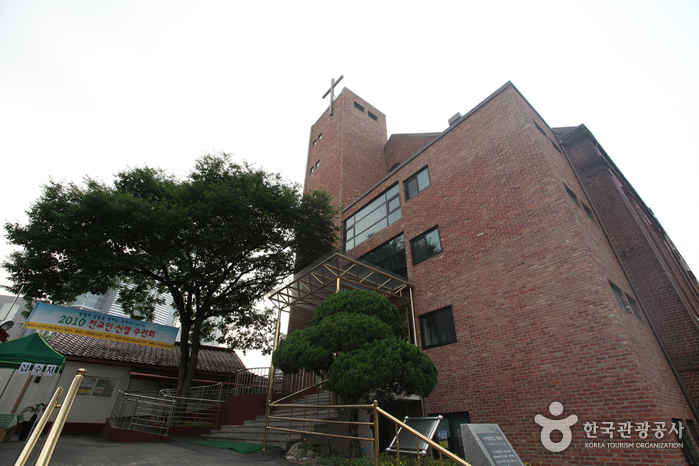
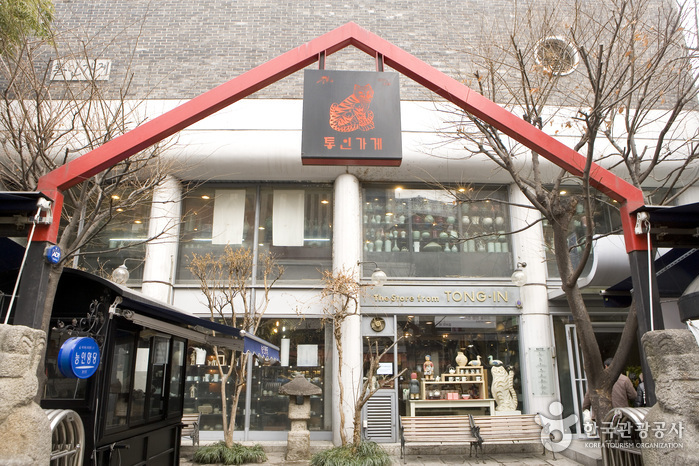
 English
English
 한국어
한국어 日本語
日本語 中文(简体)
中文(简体) Deutsch
Deutsch Français
Français Español
Español Русский
Русский